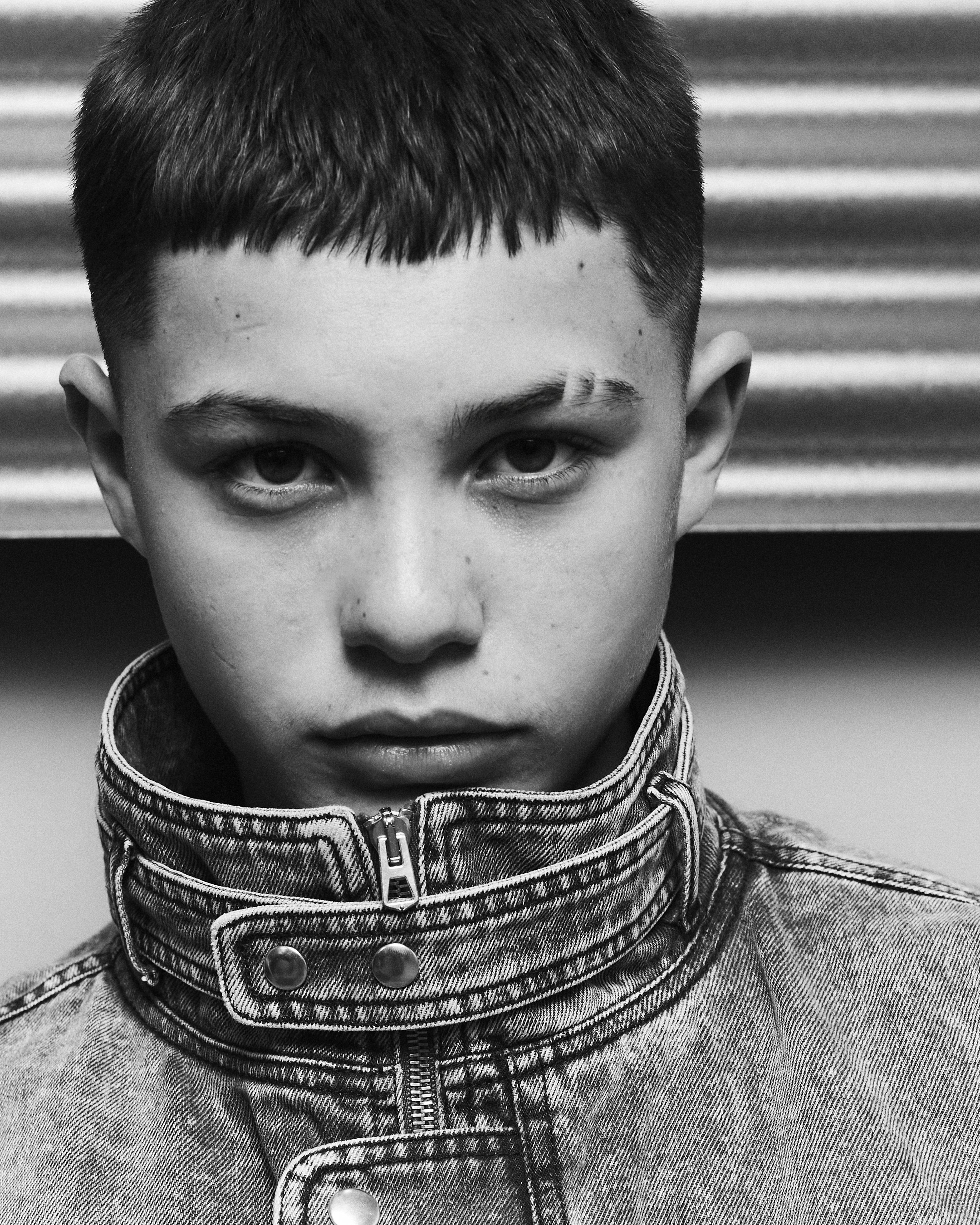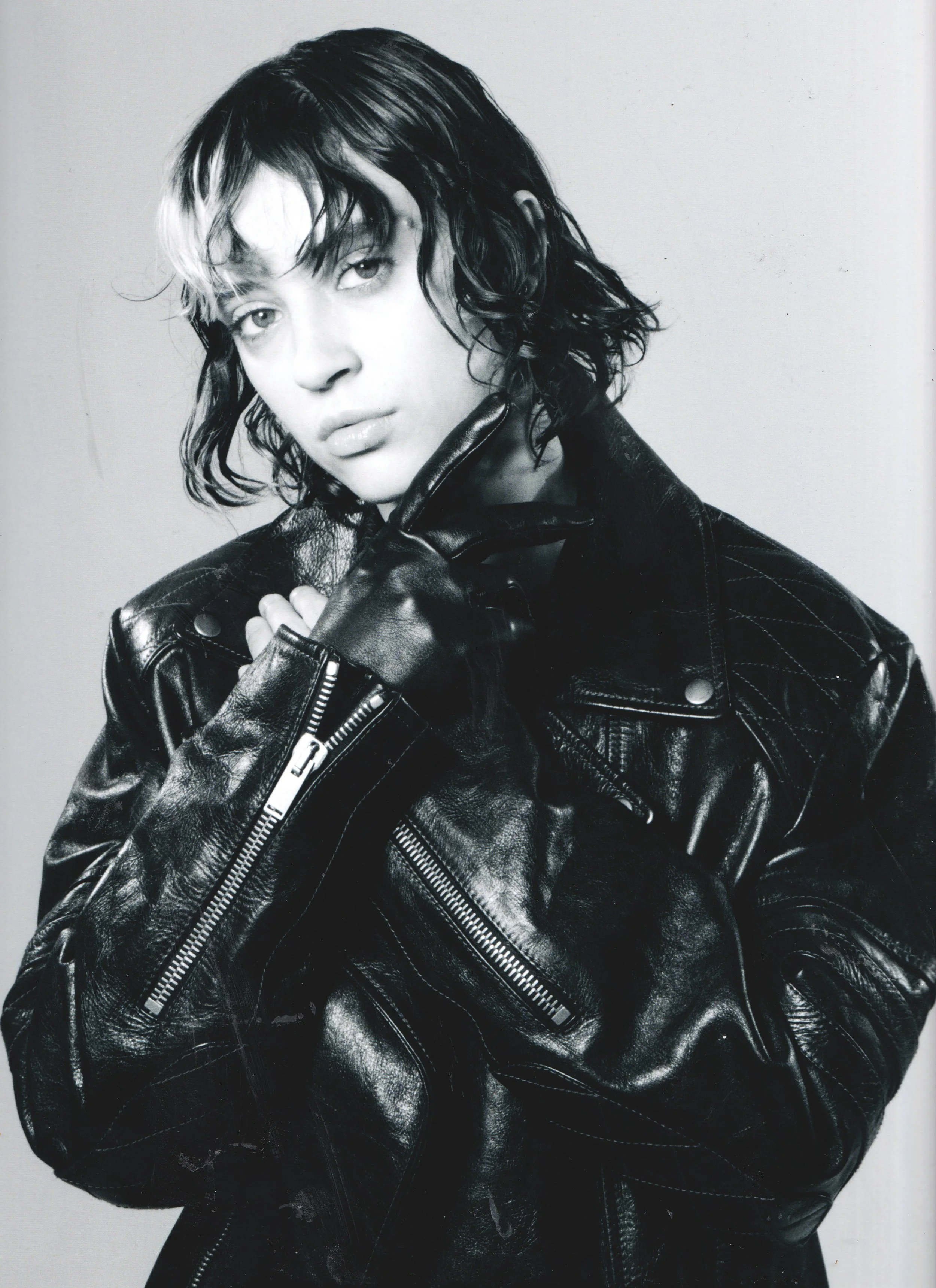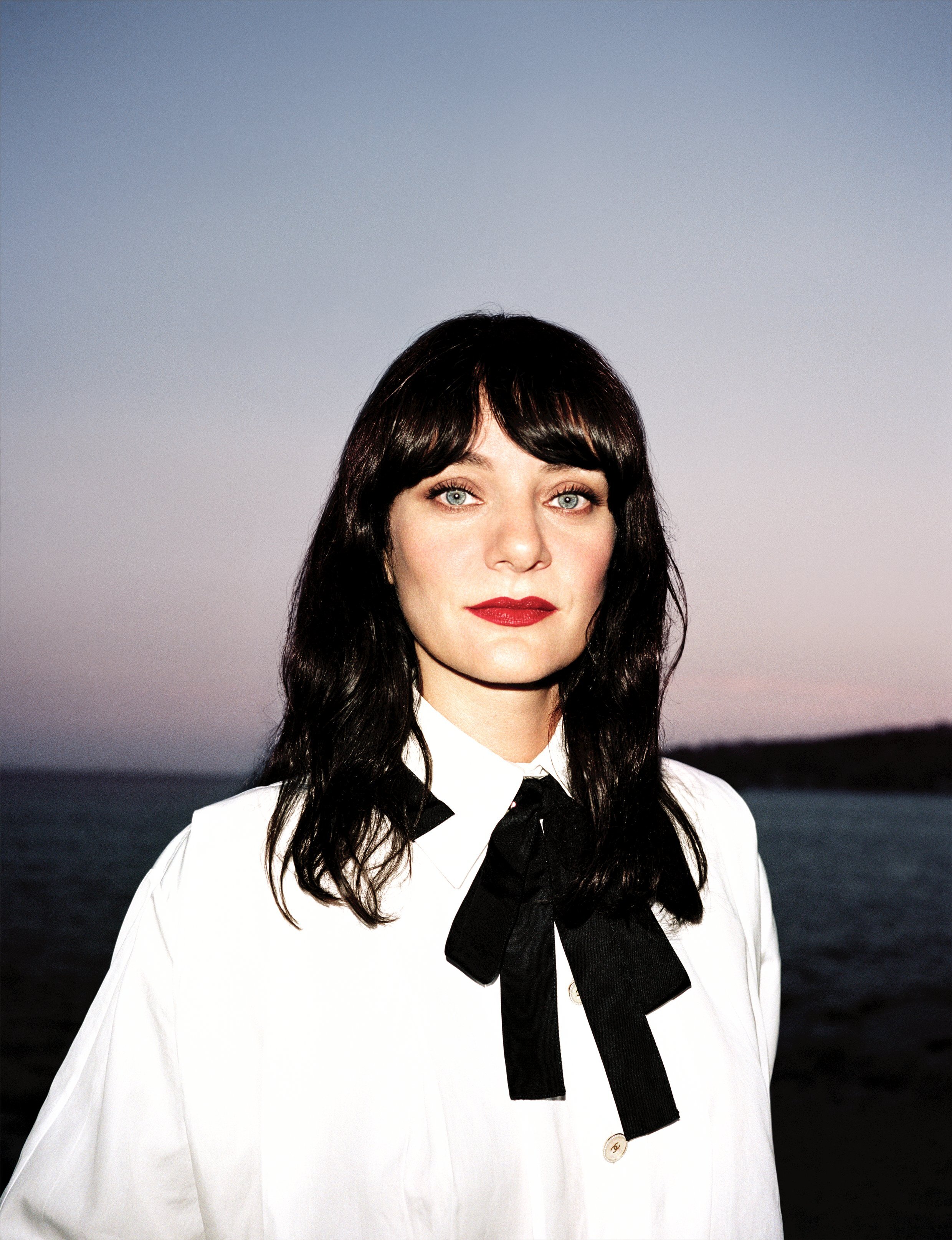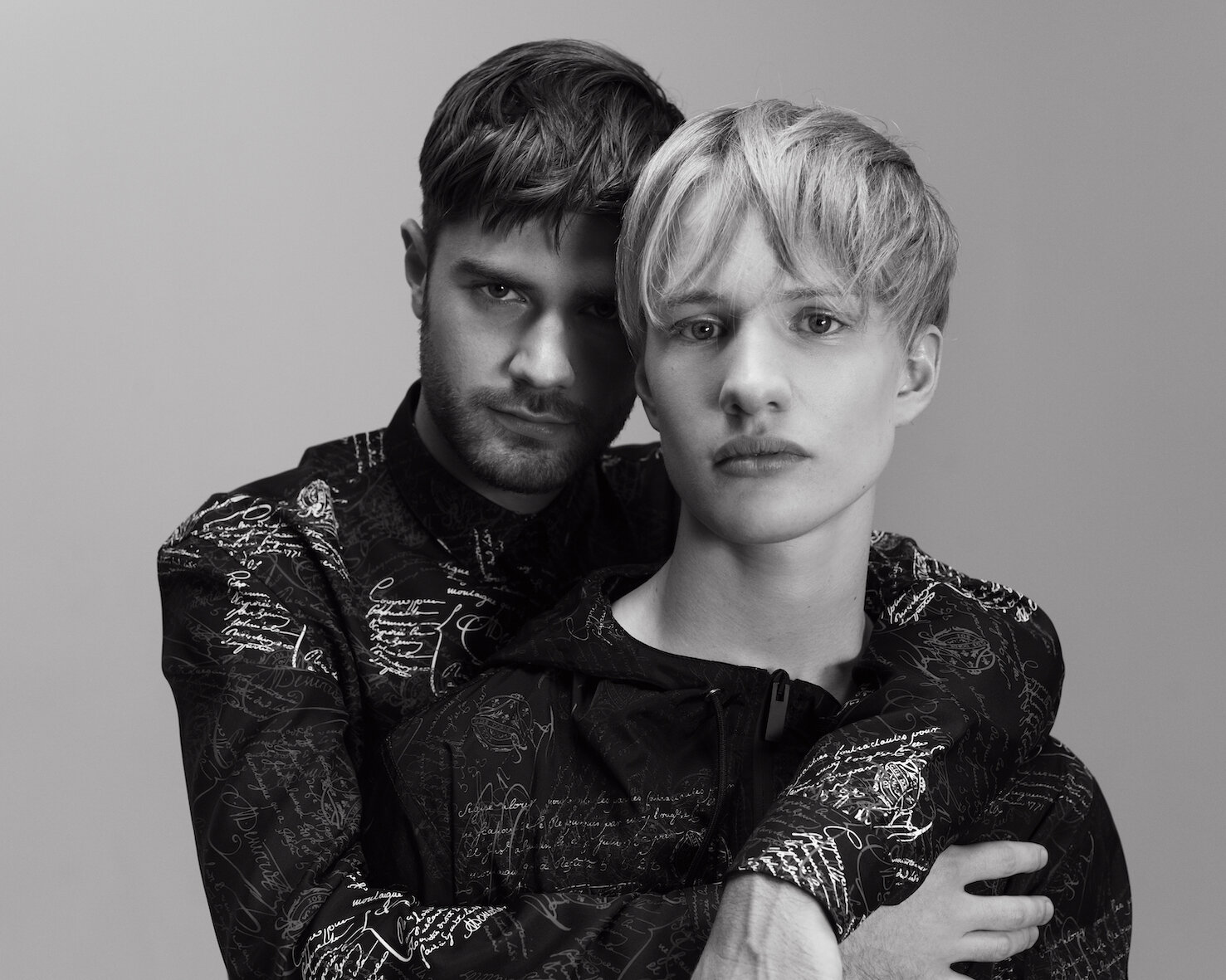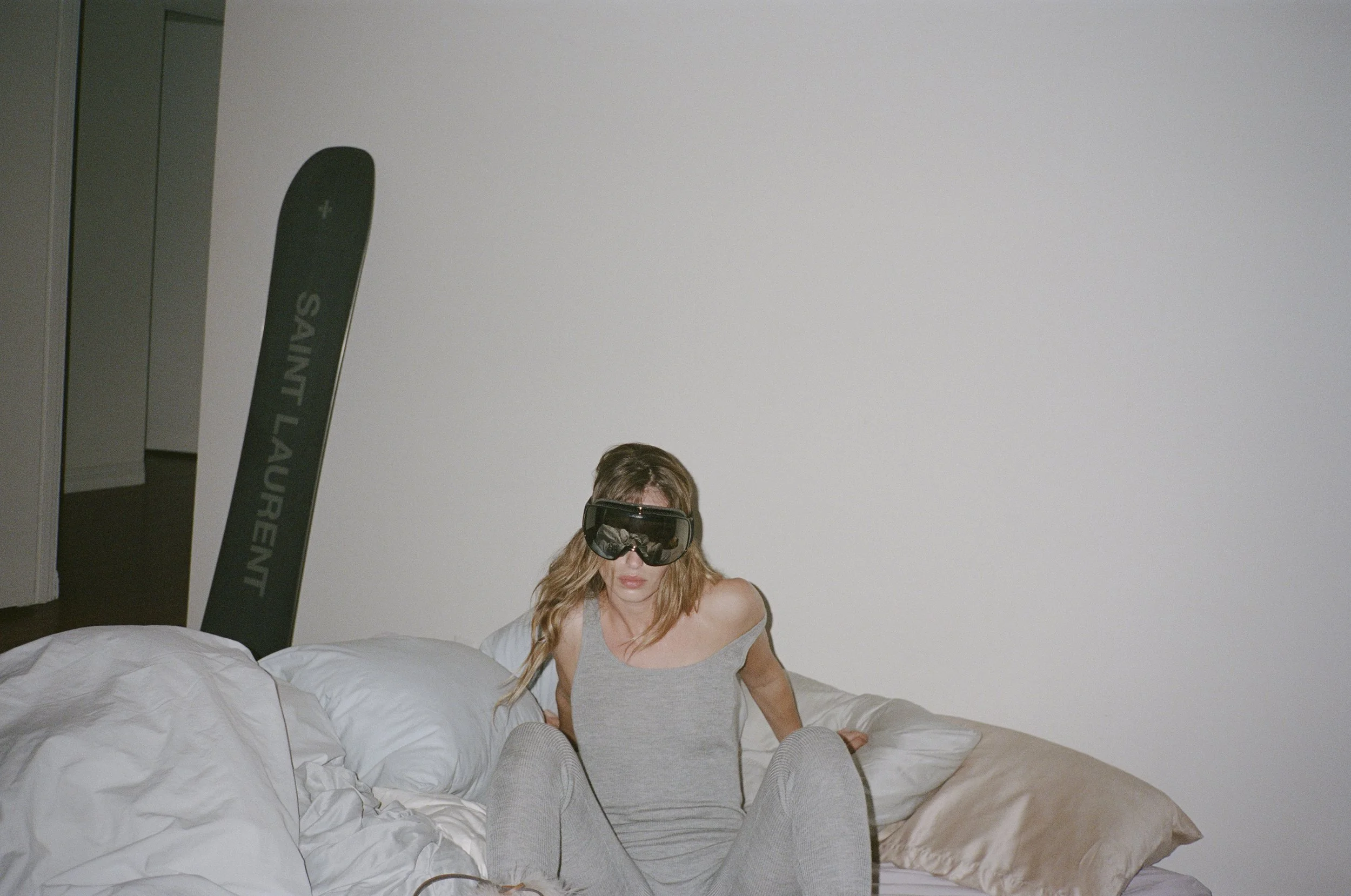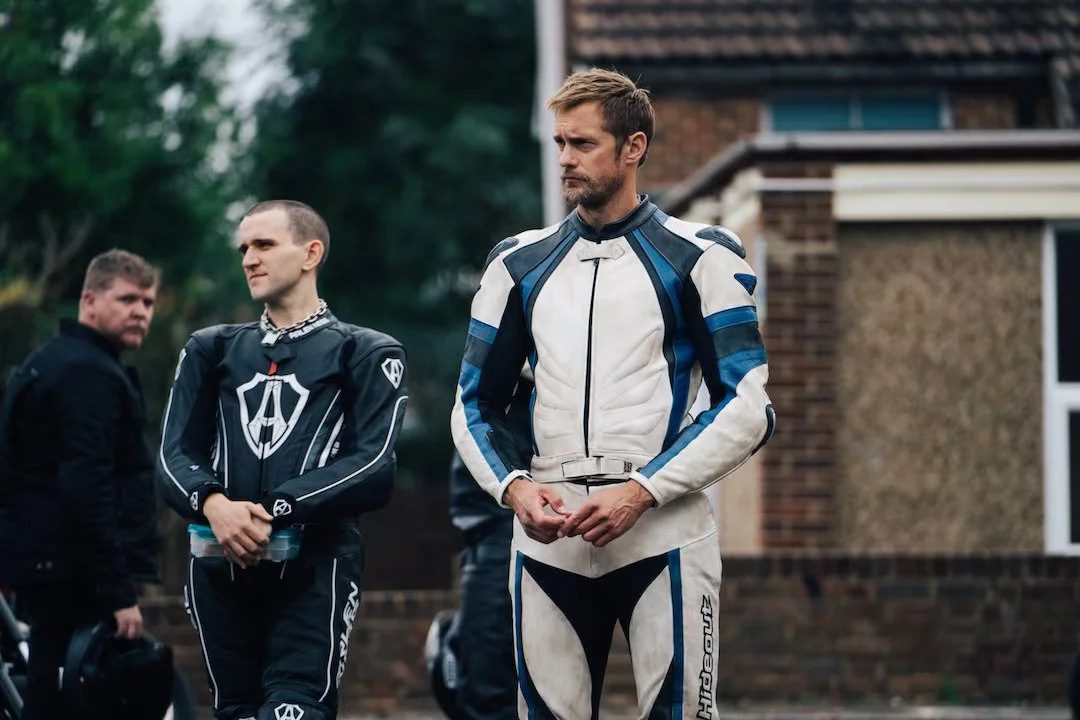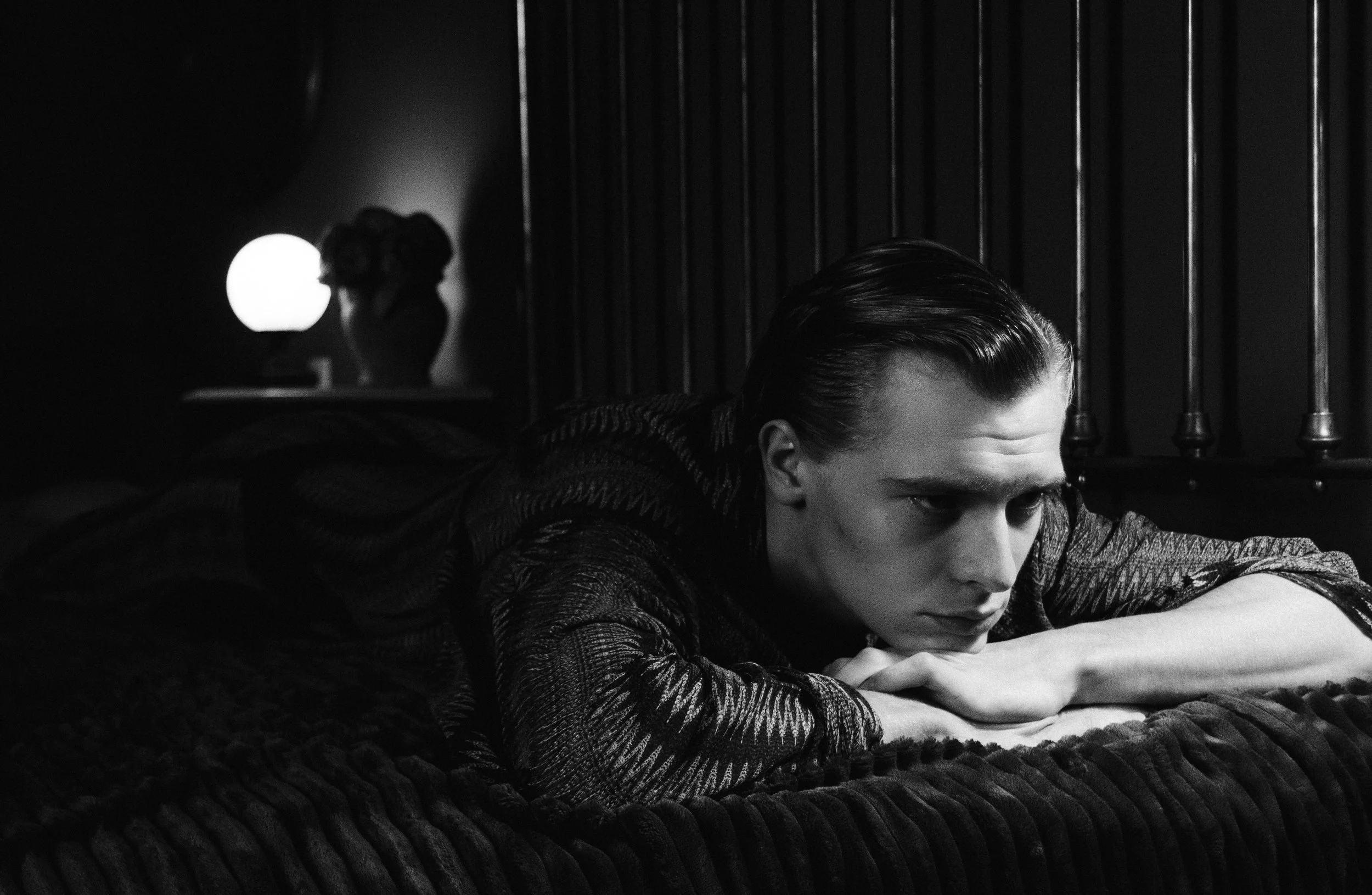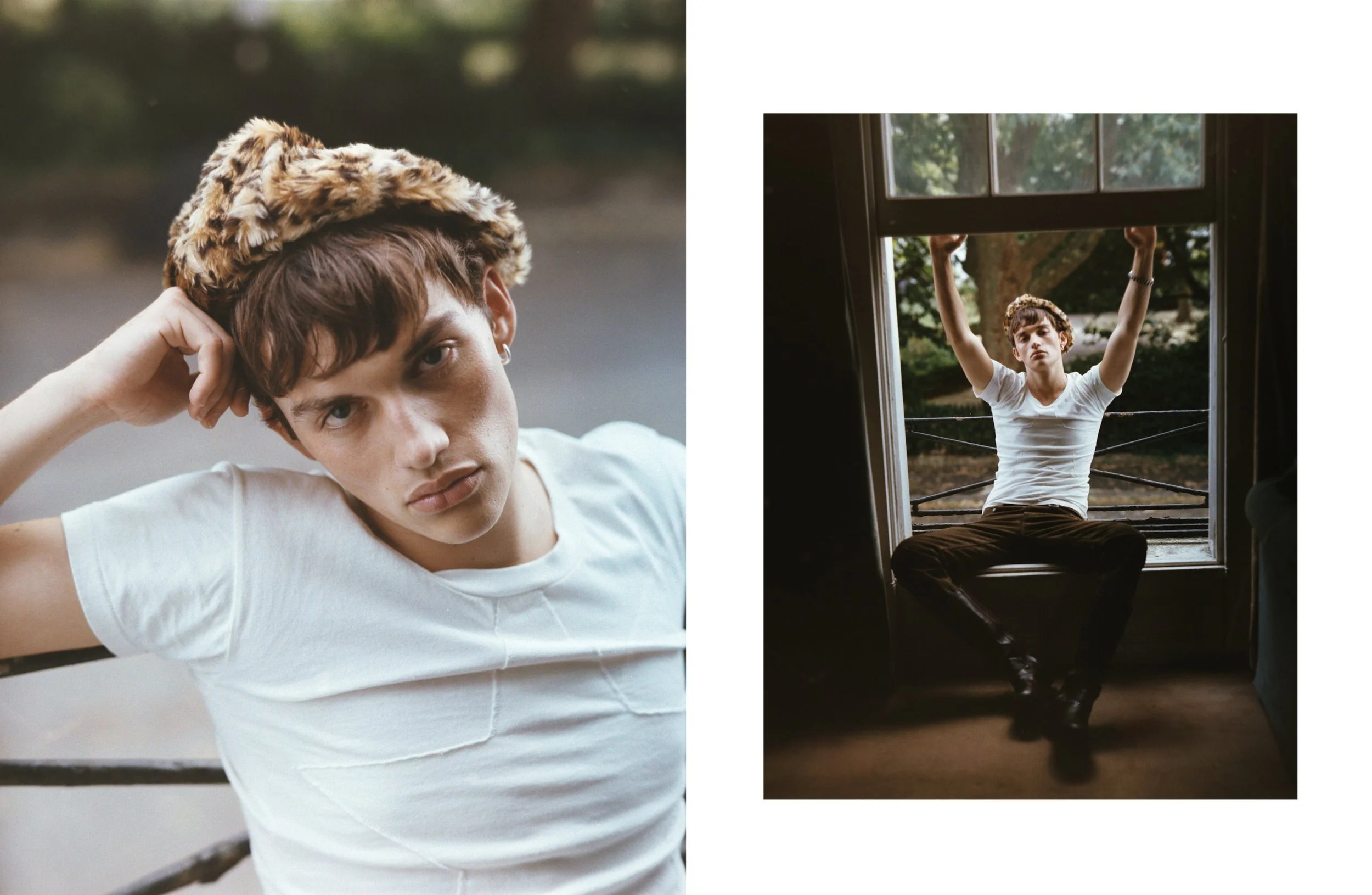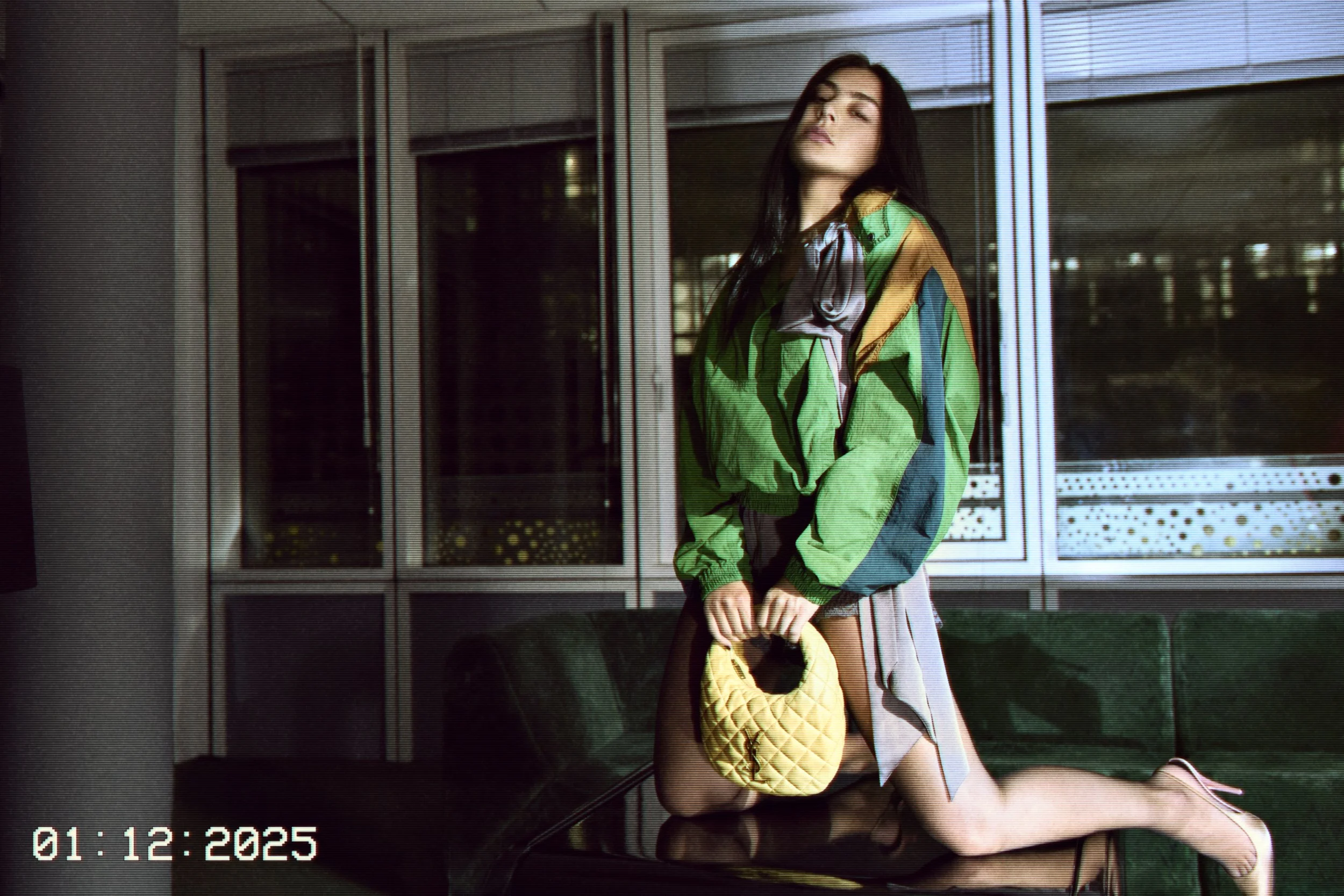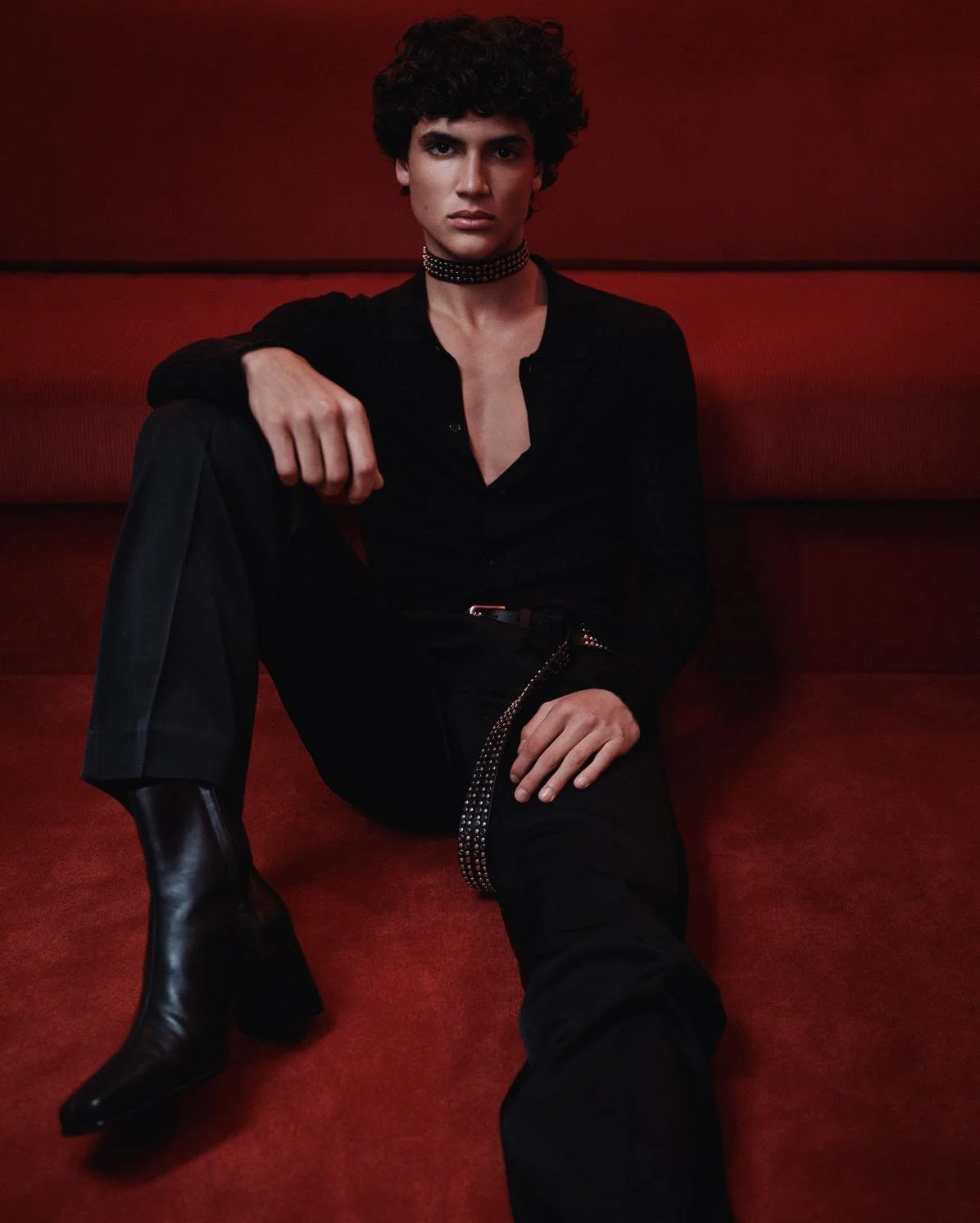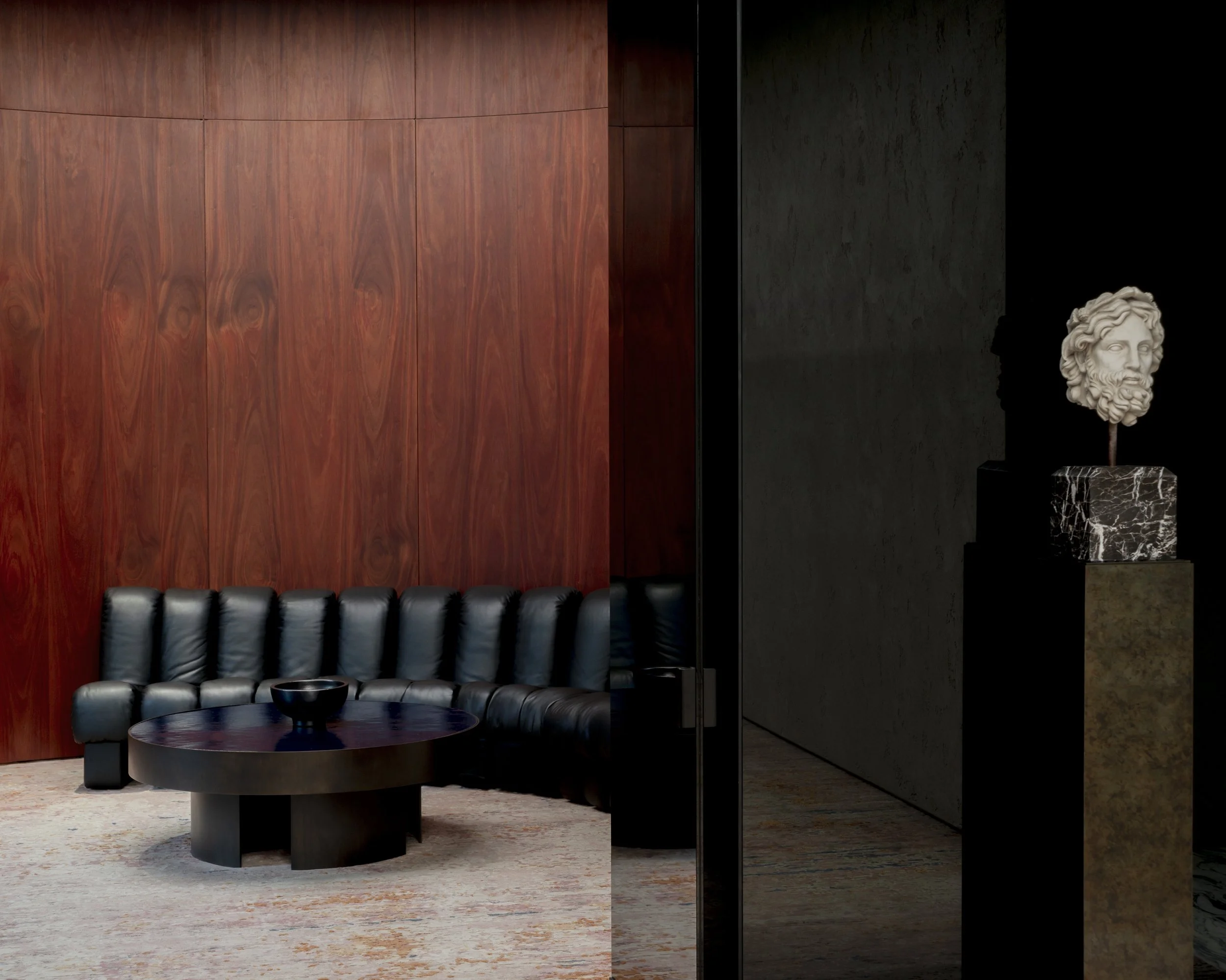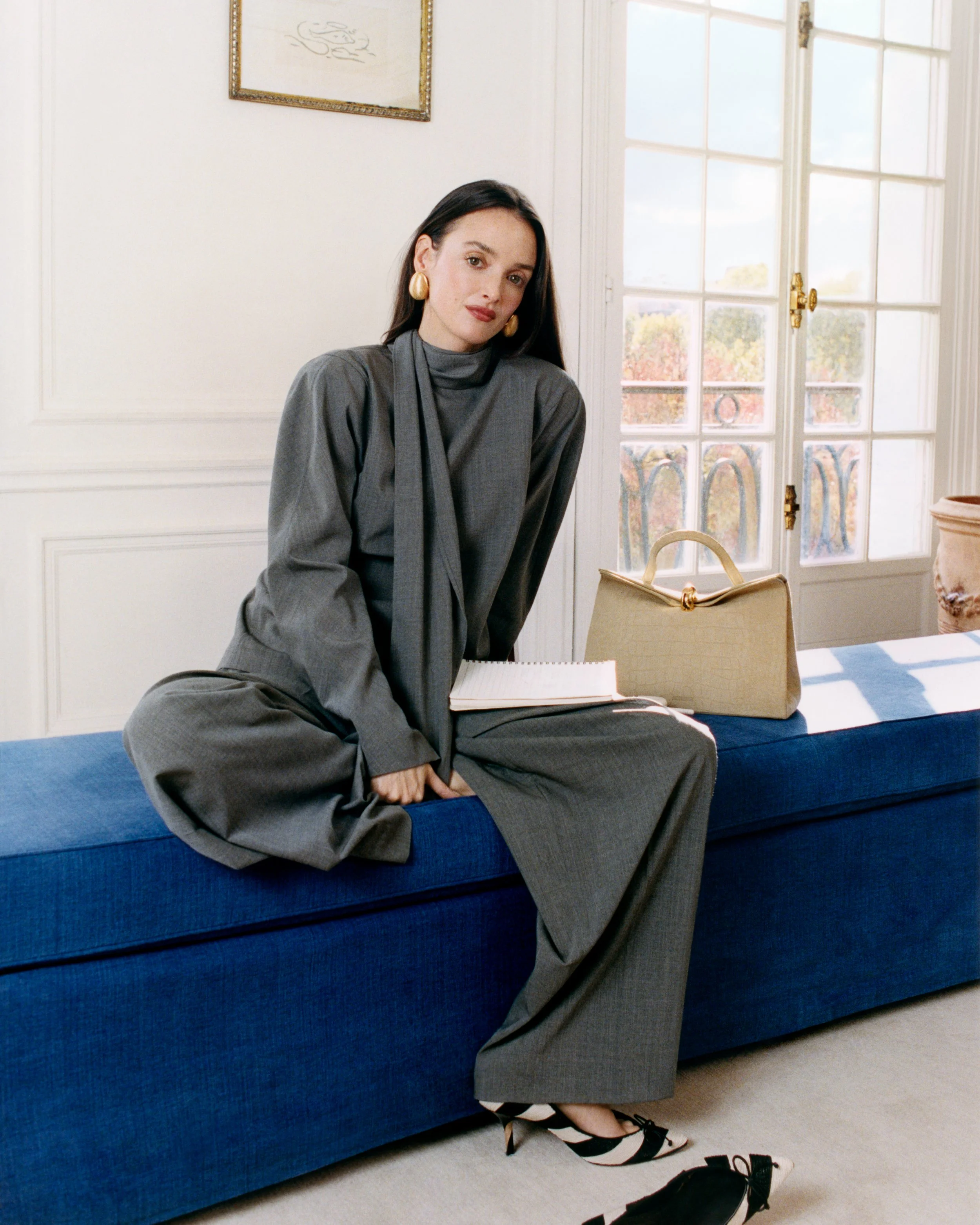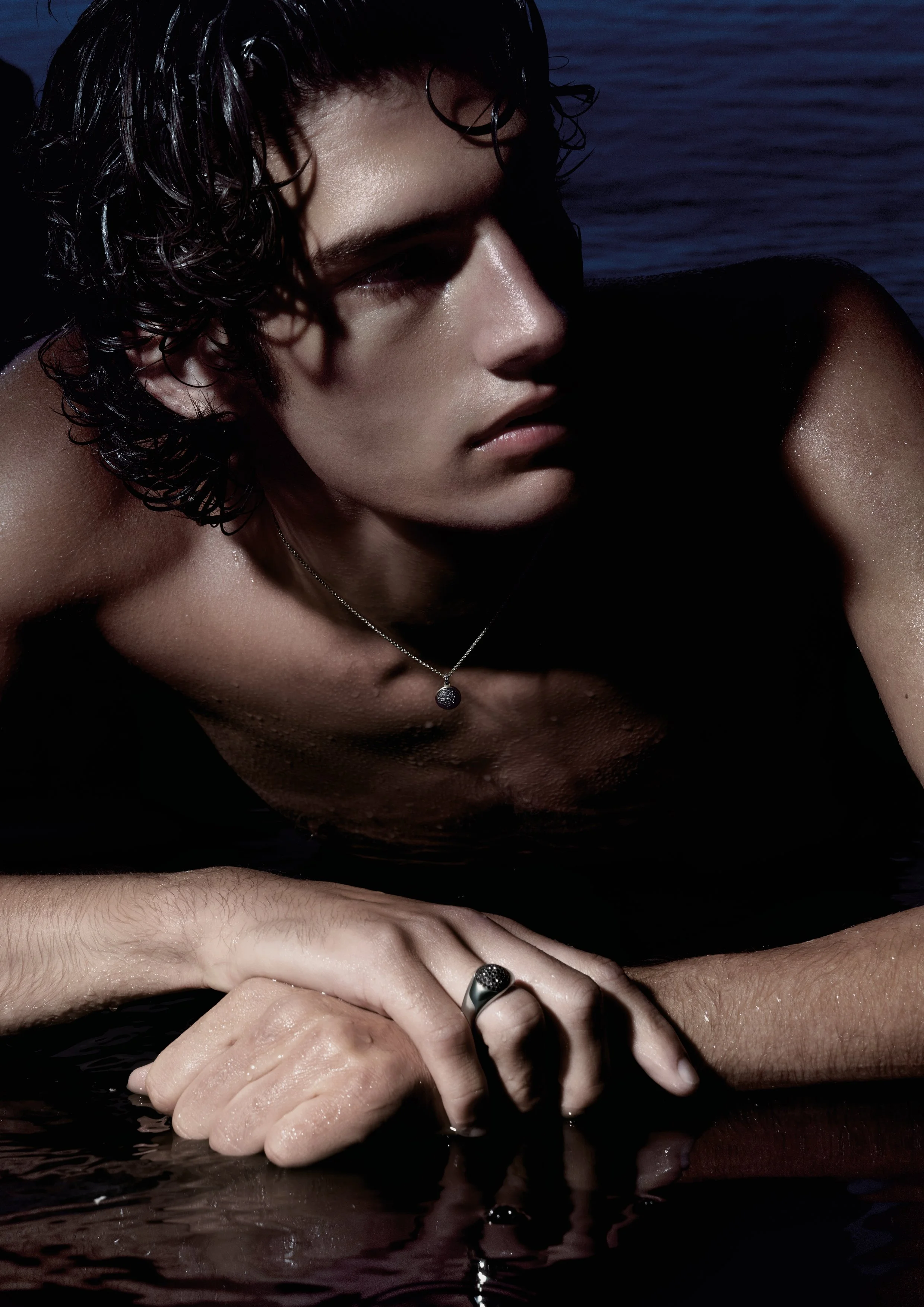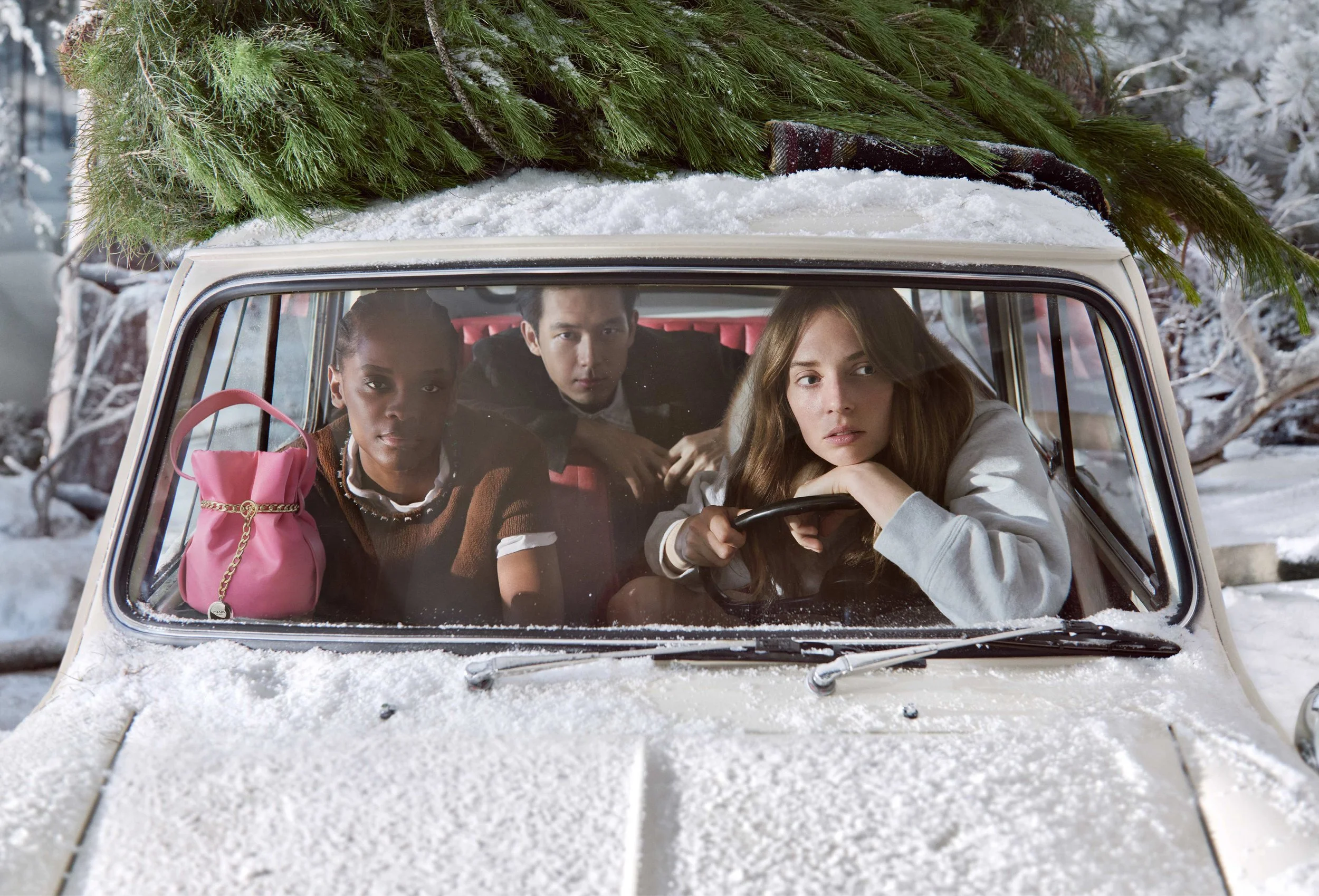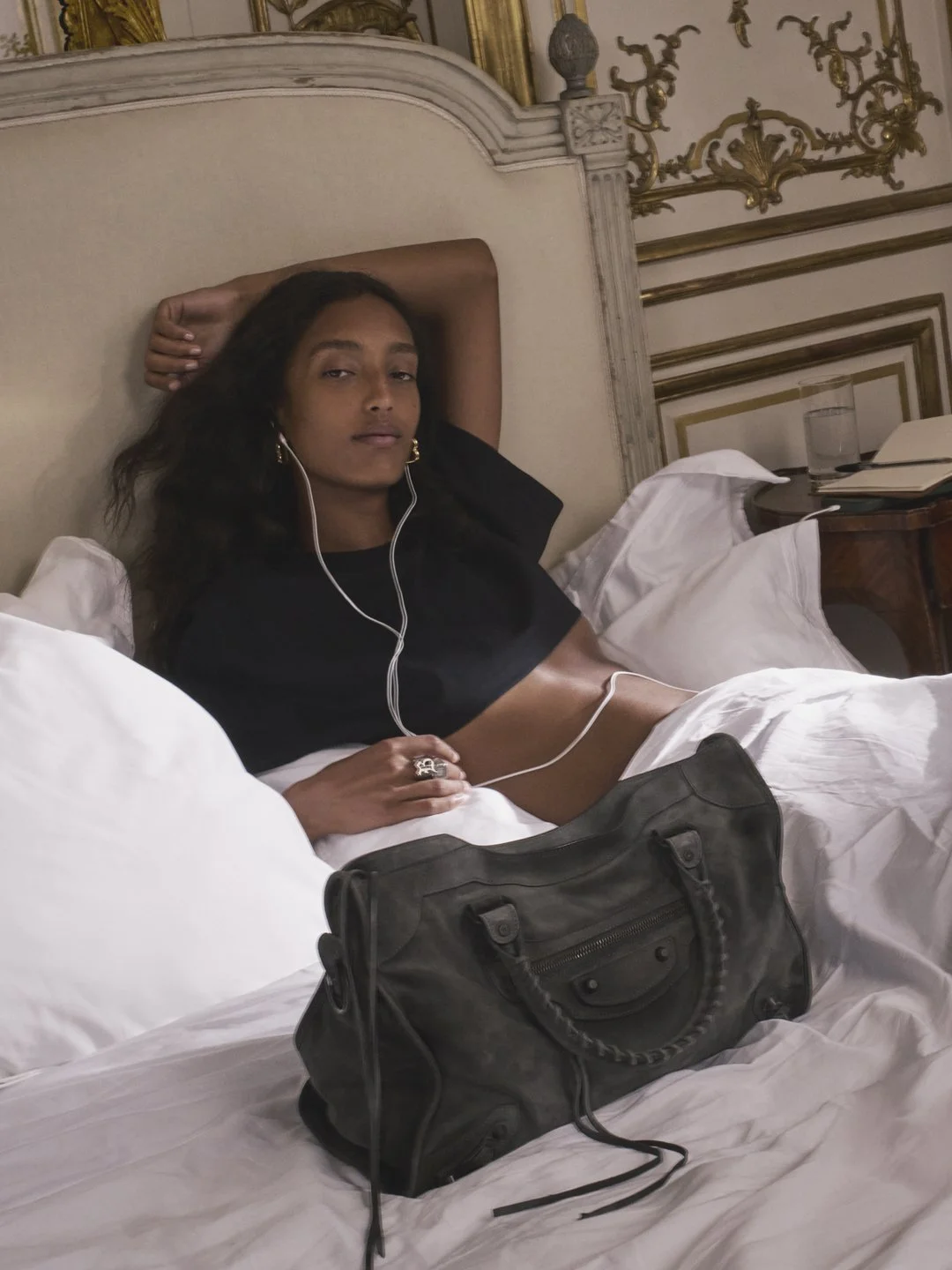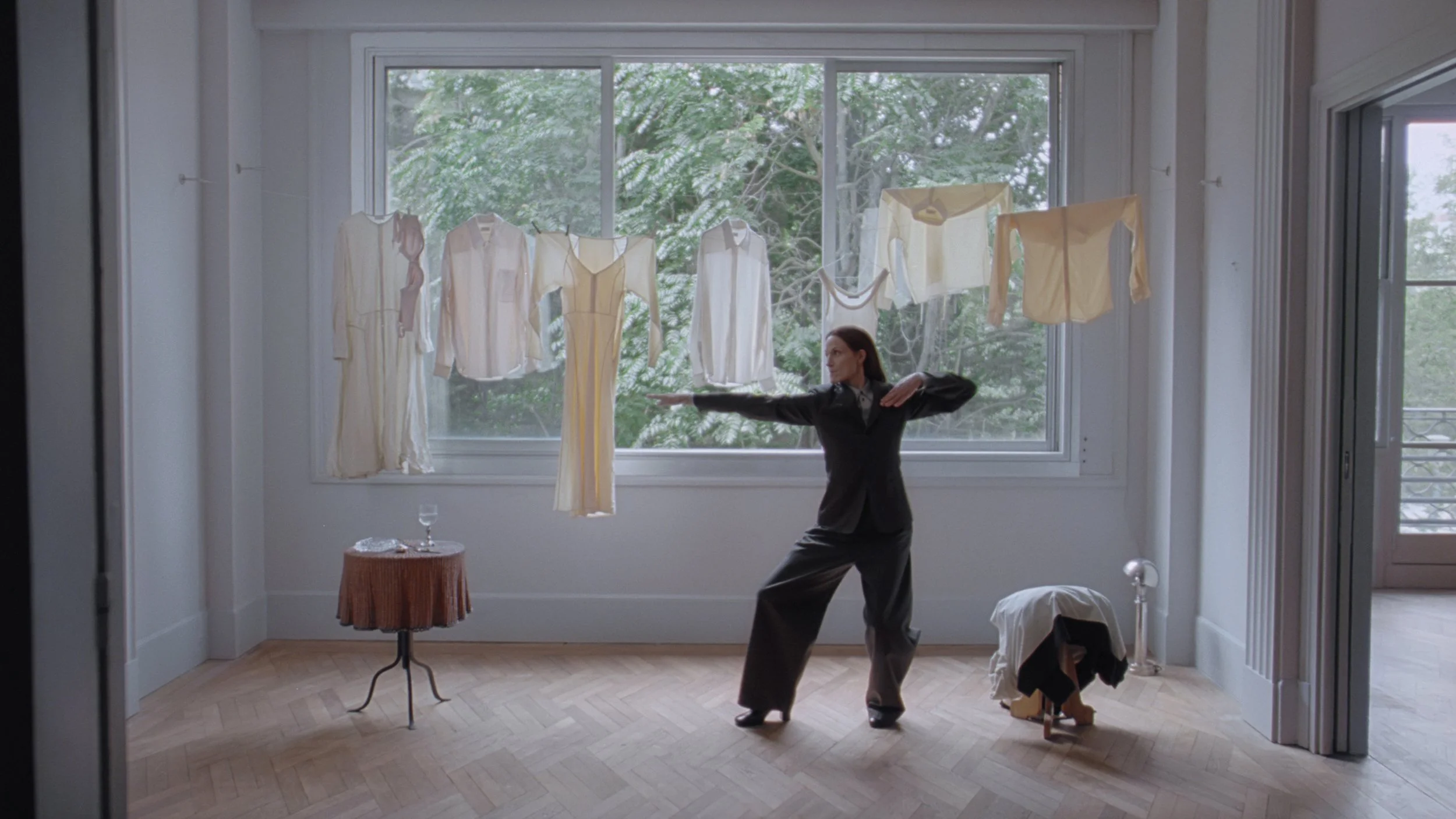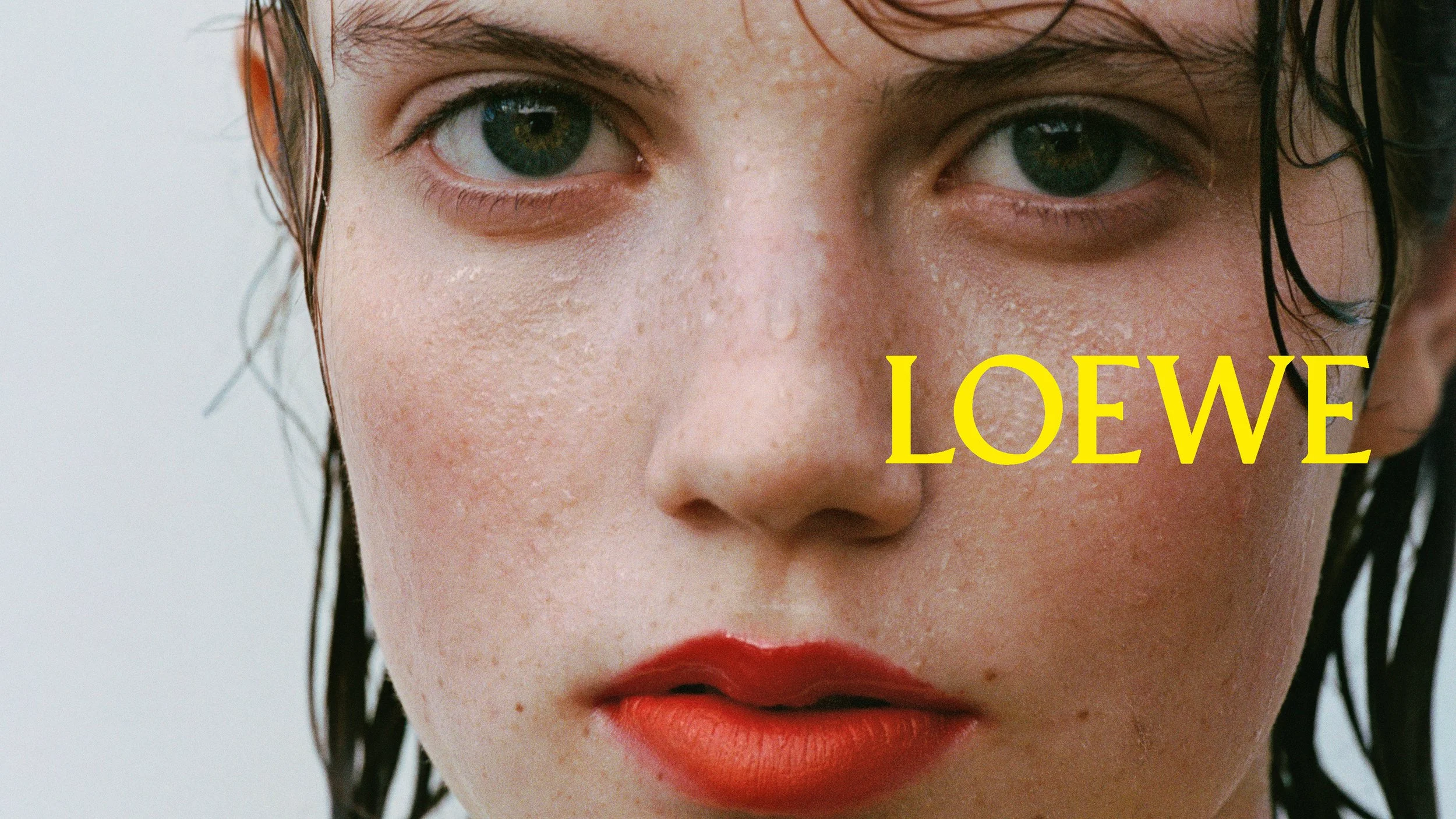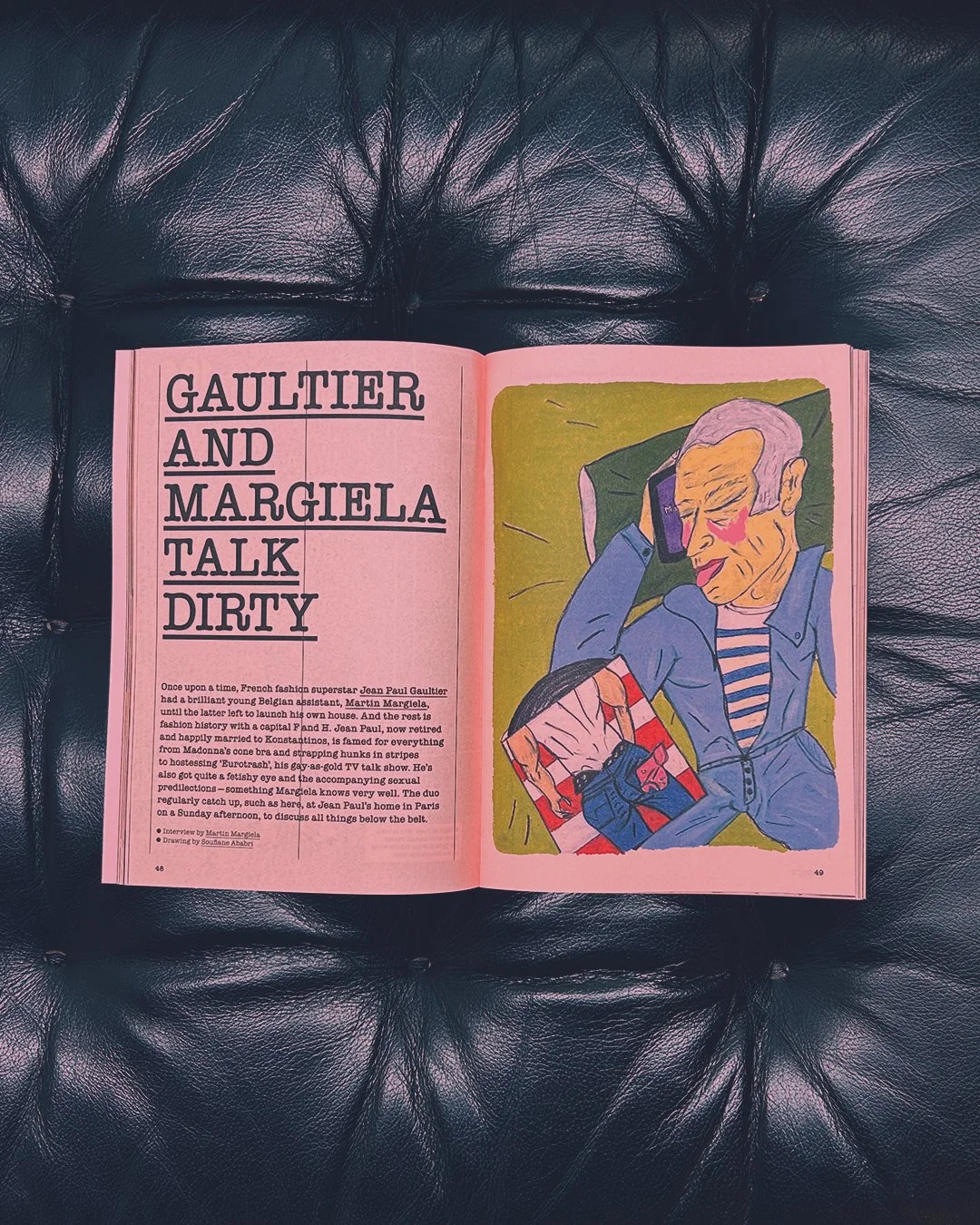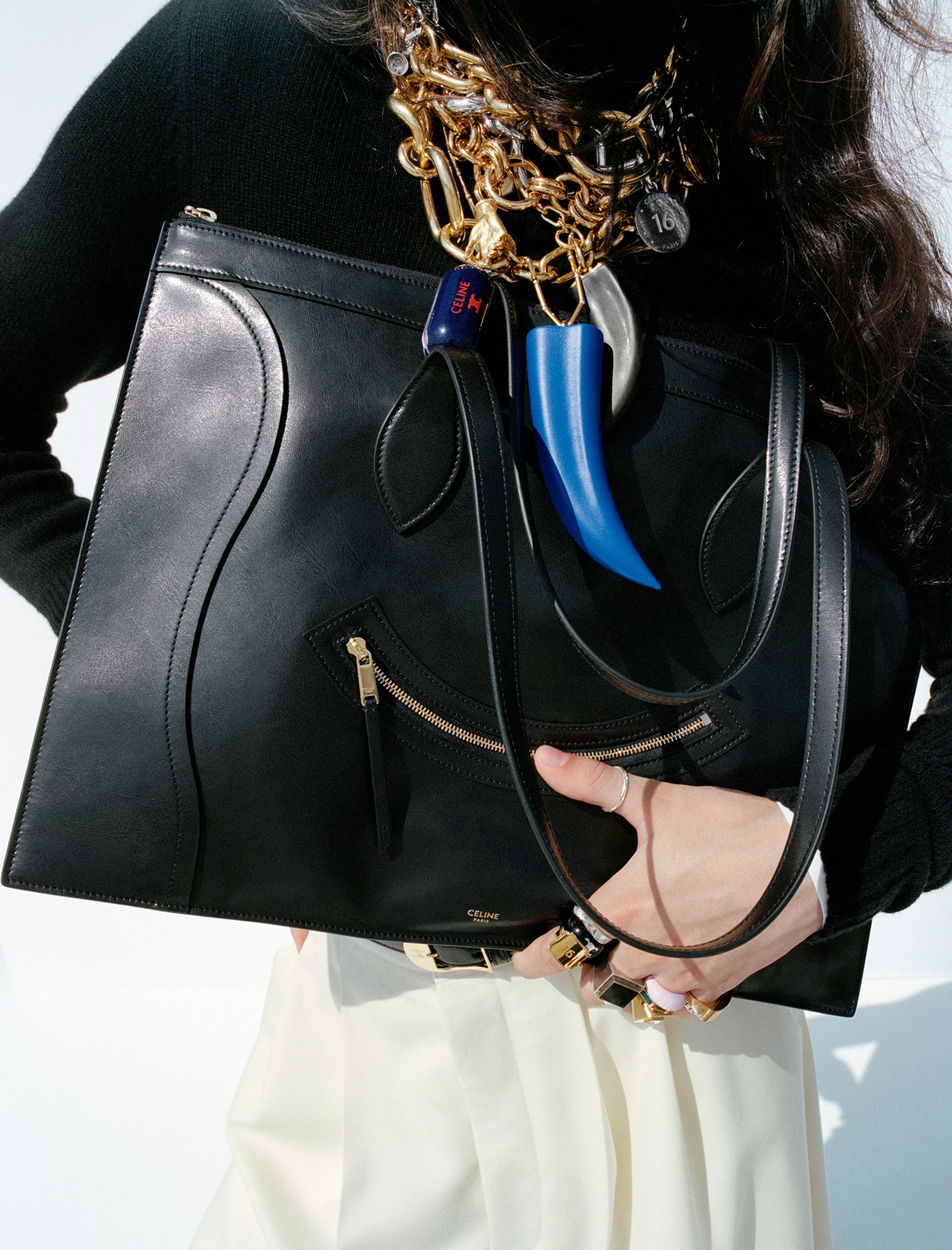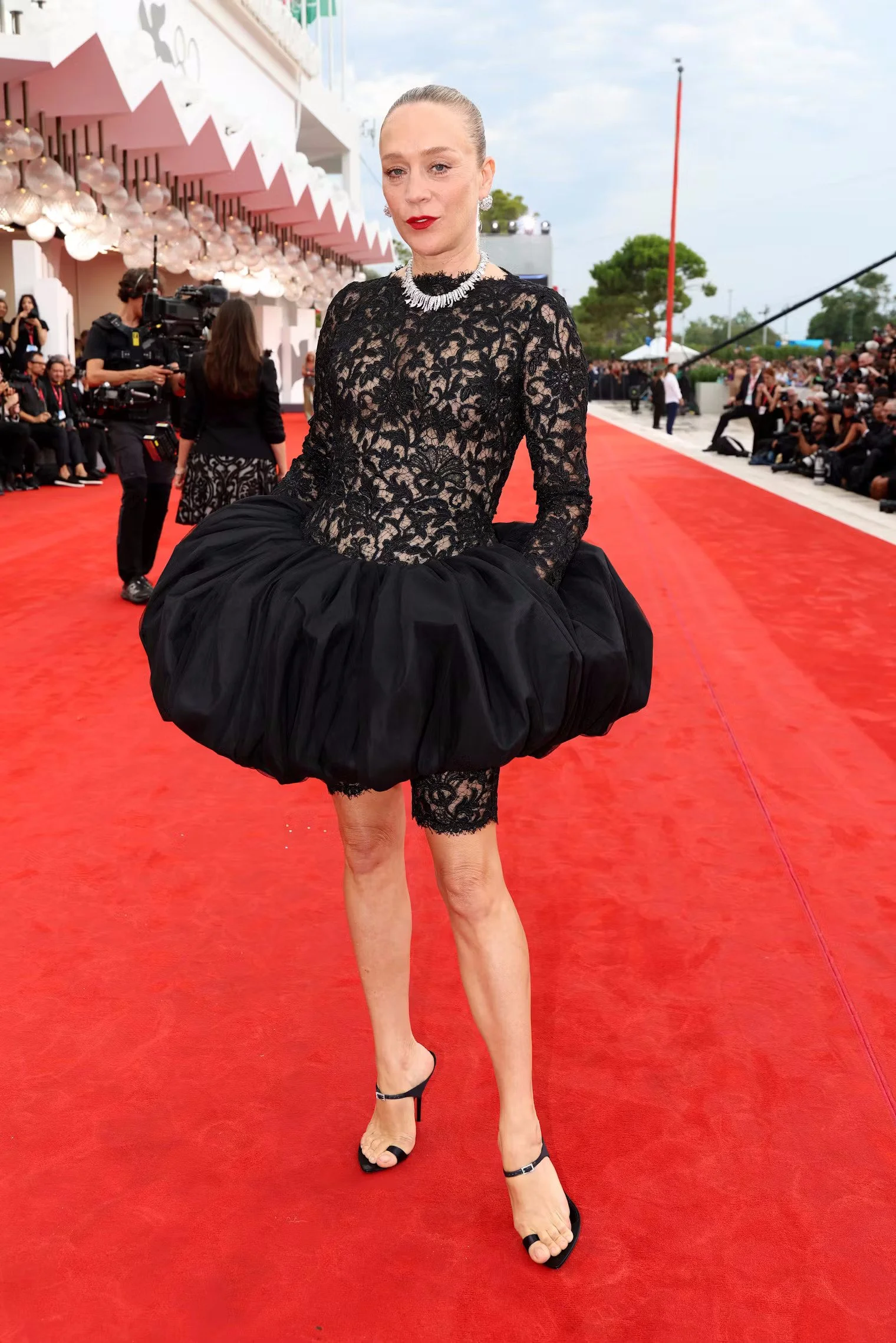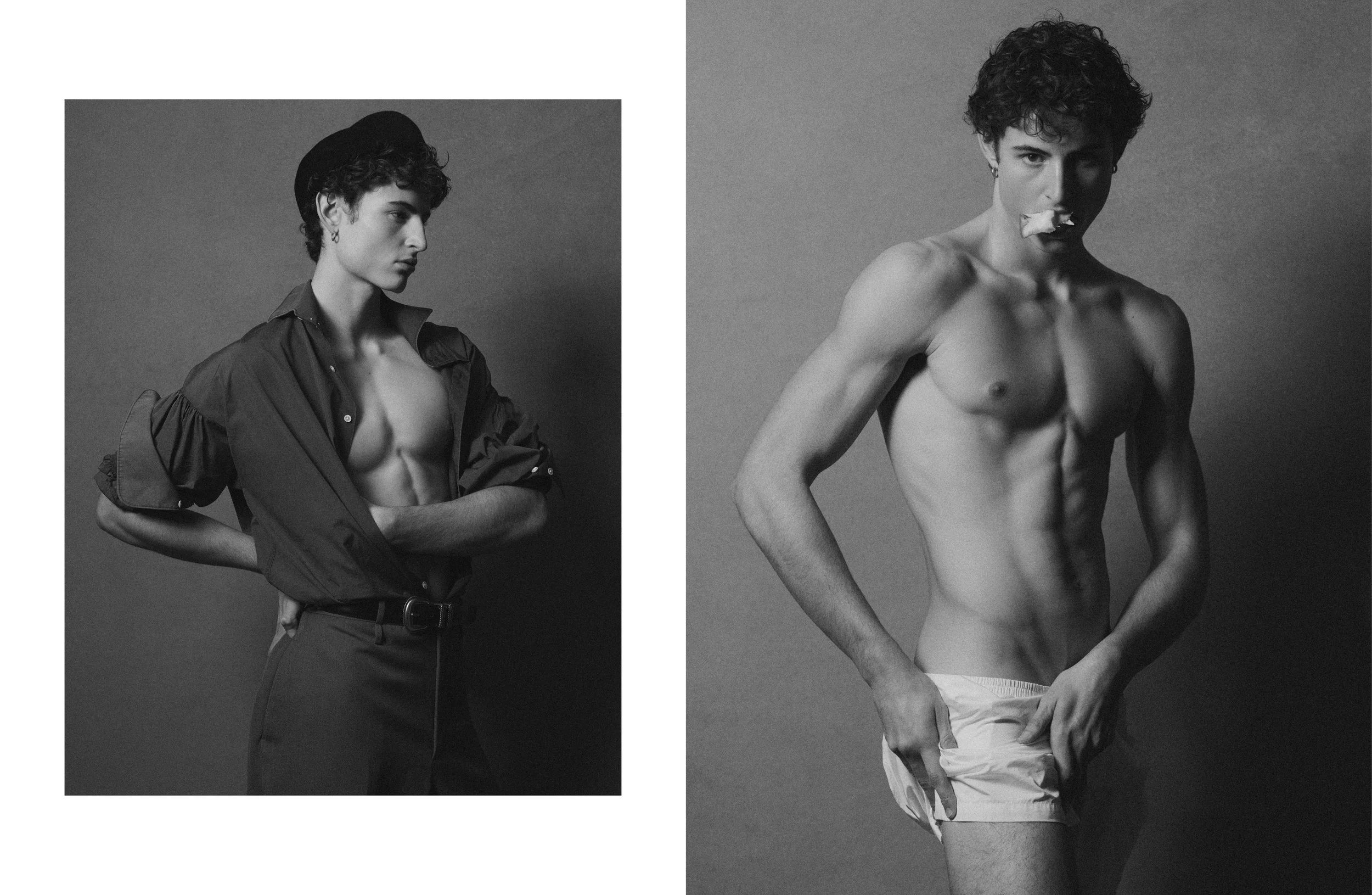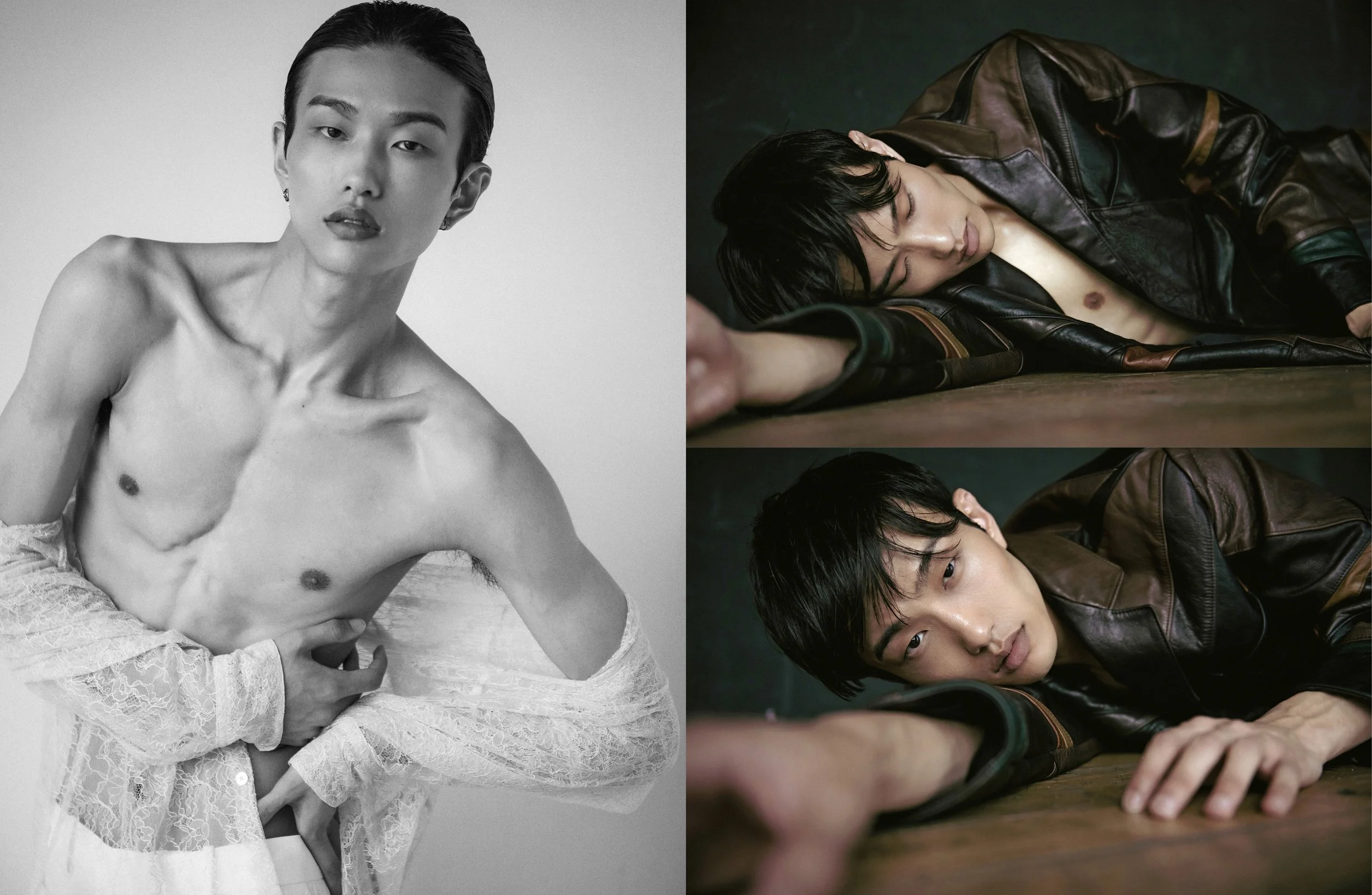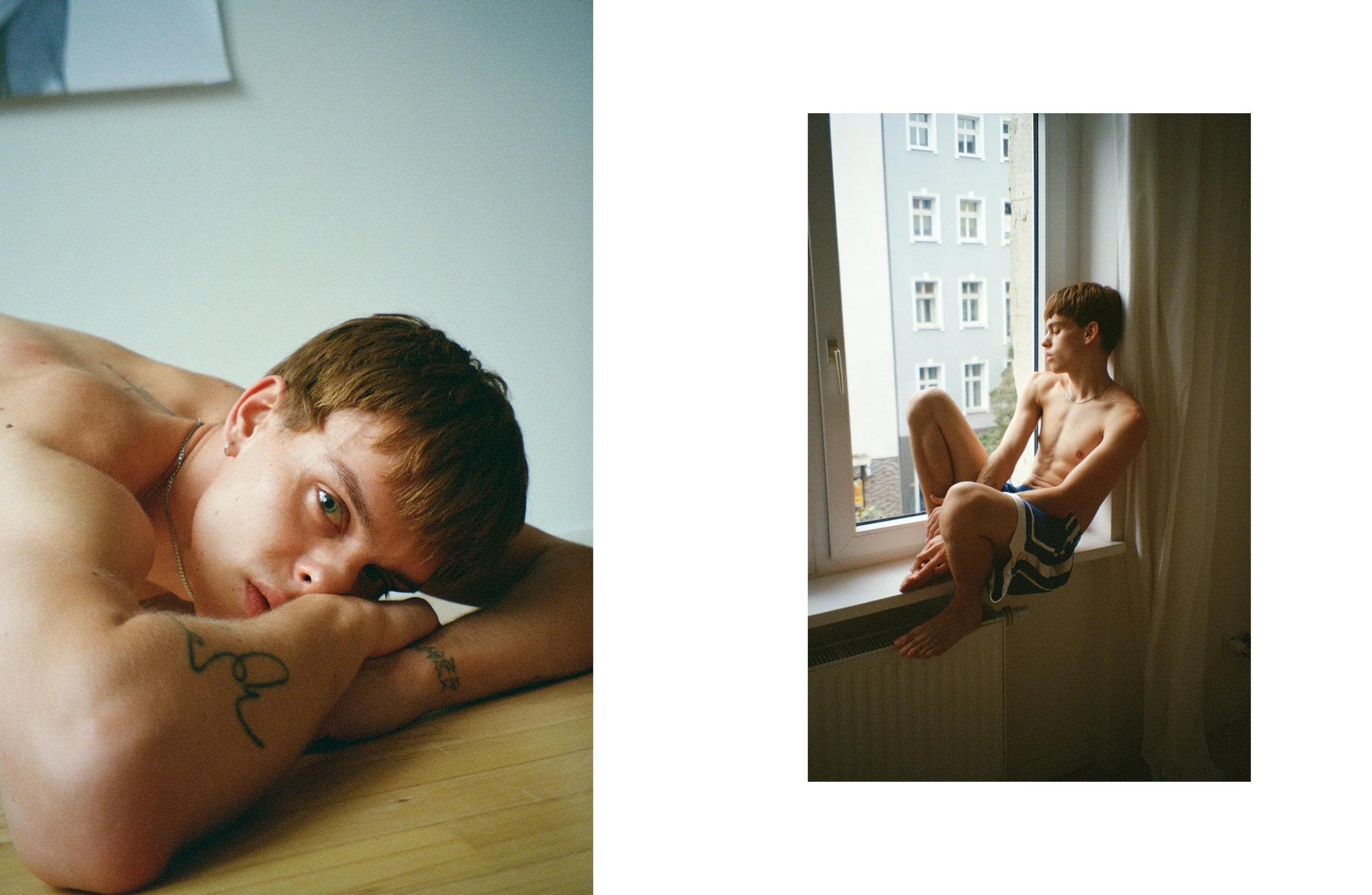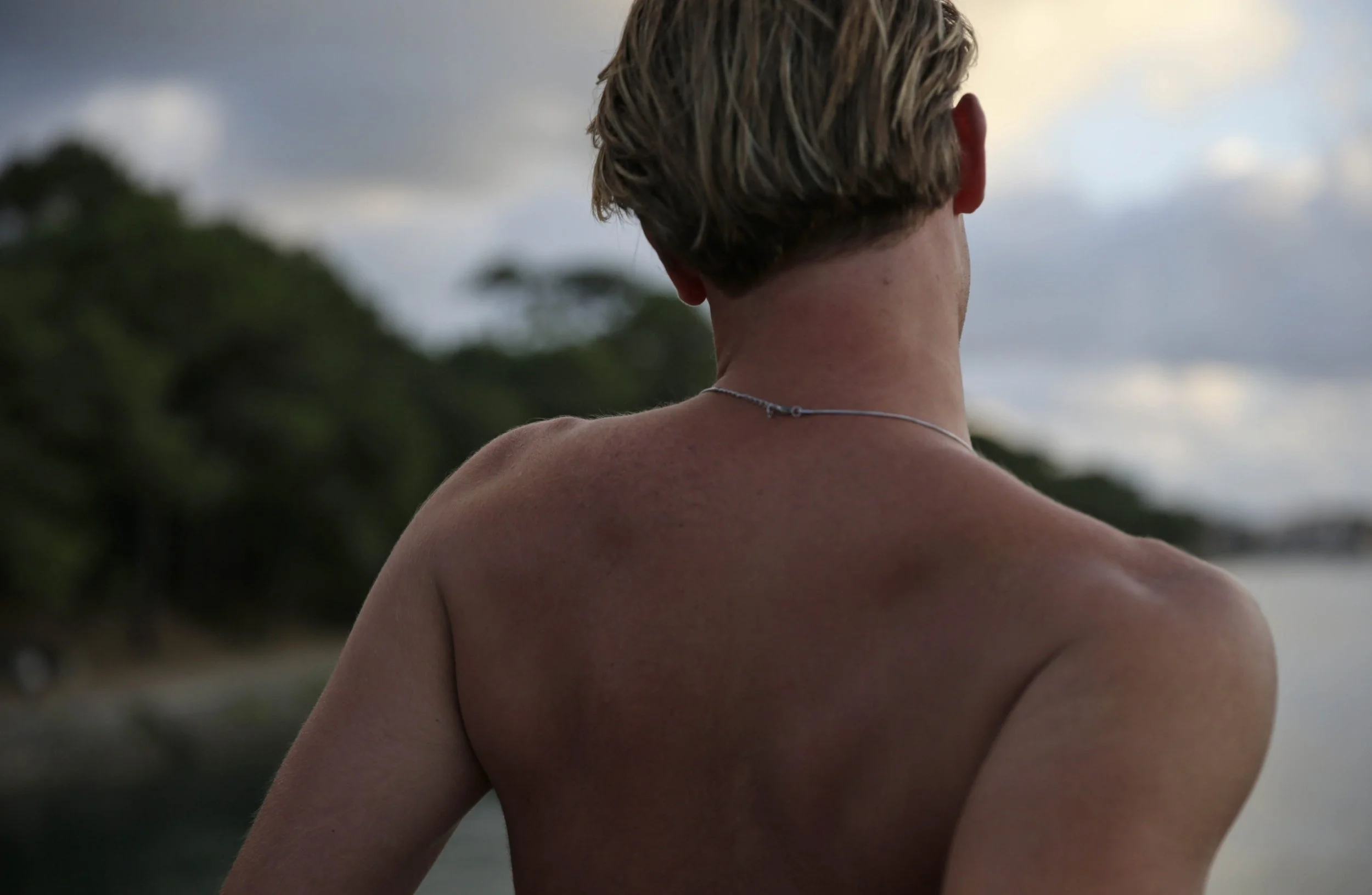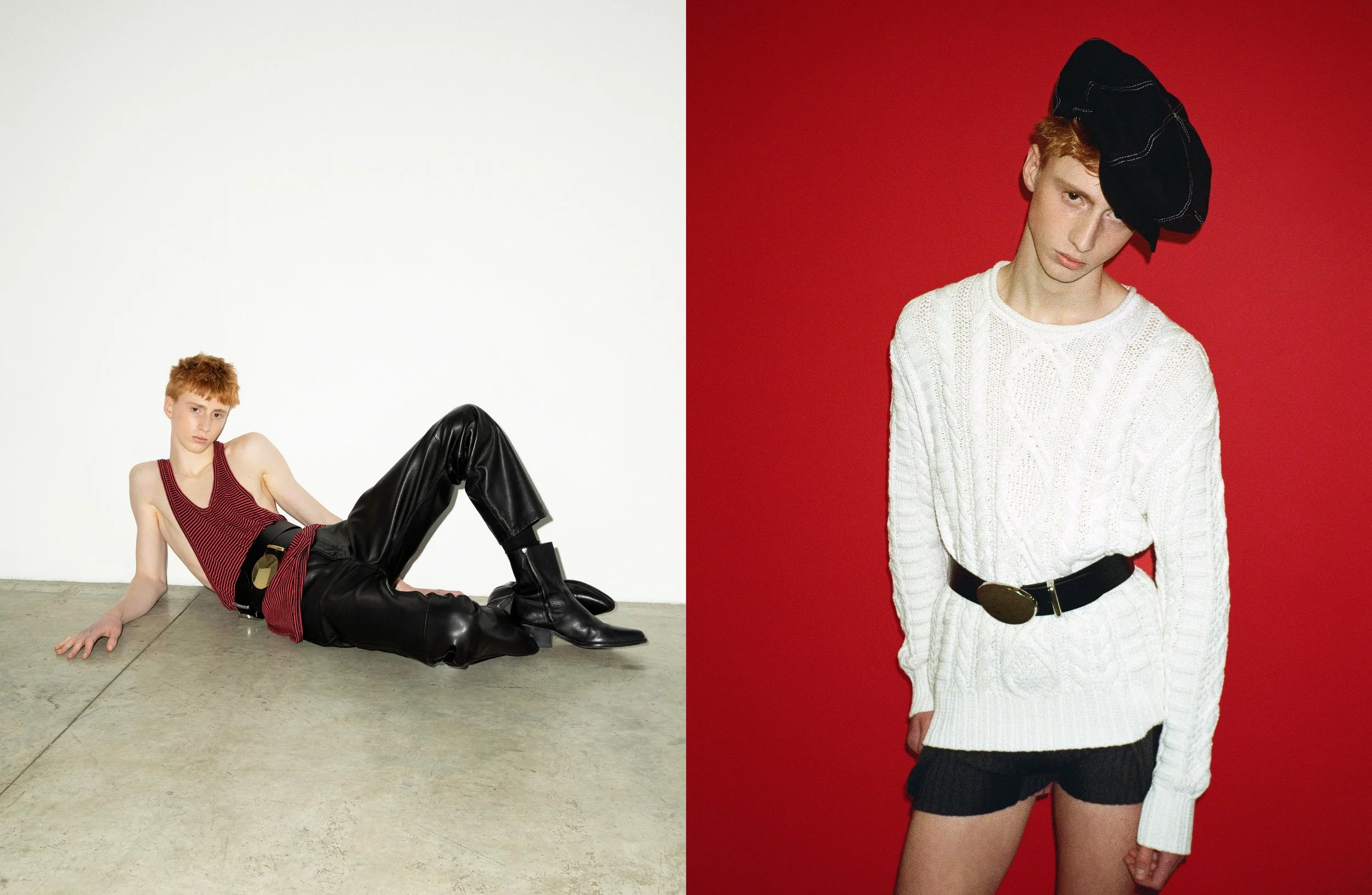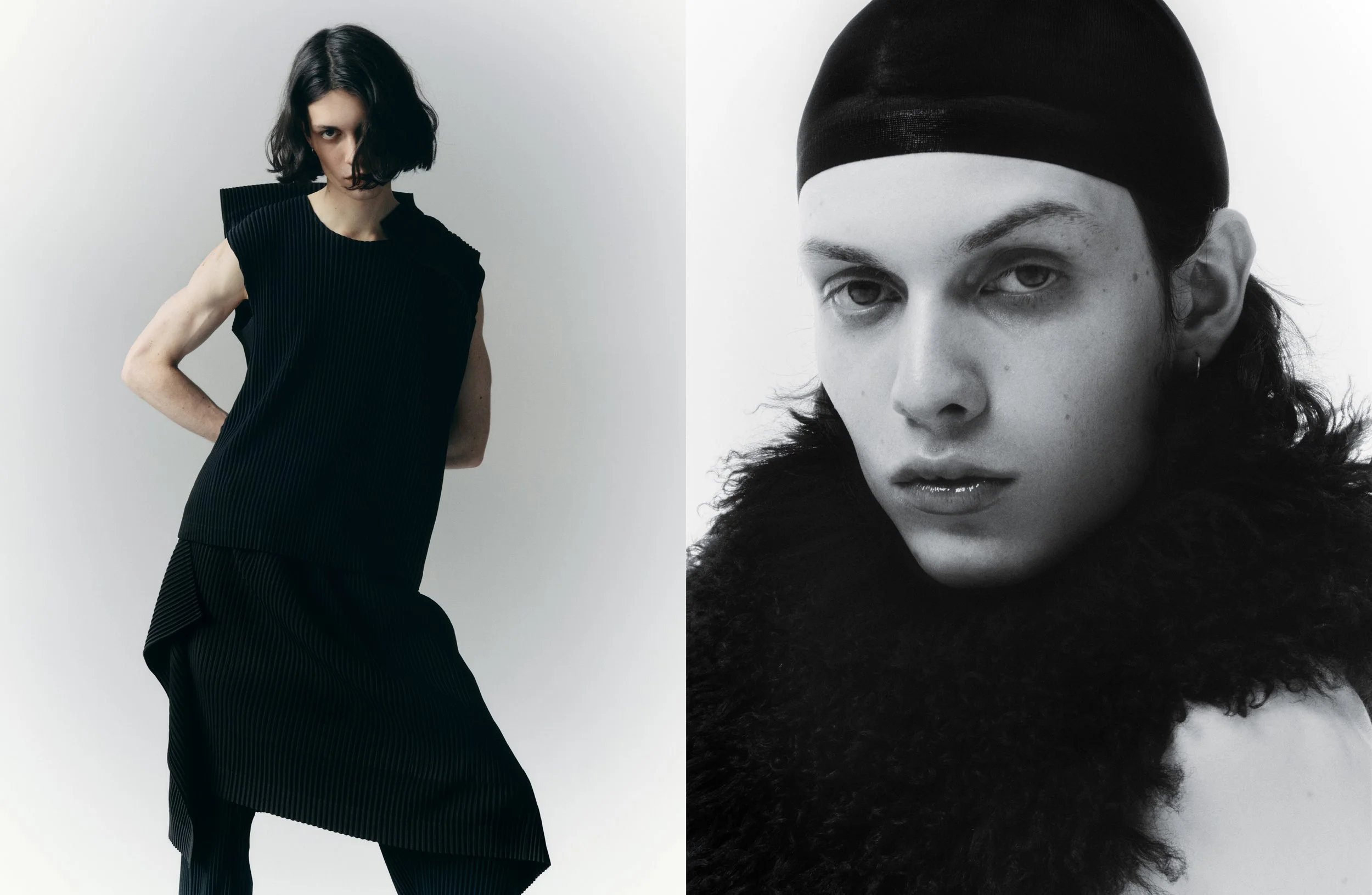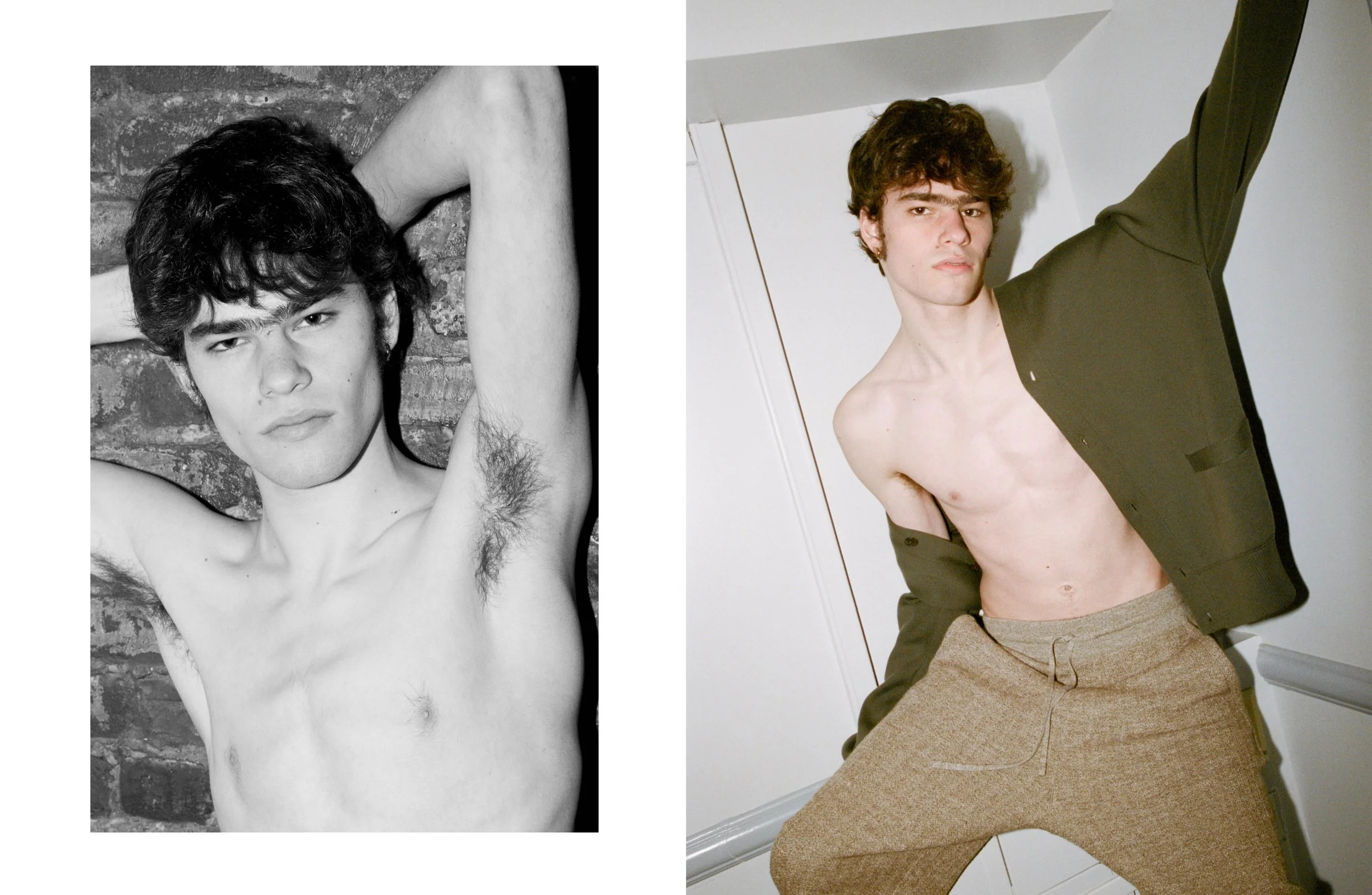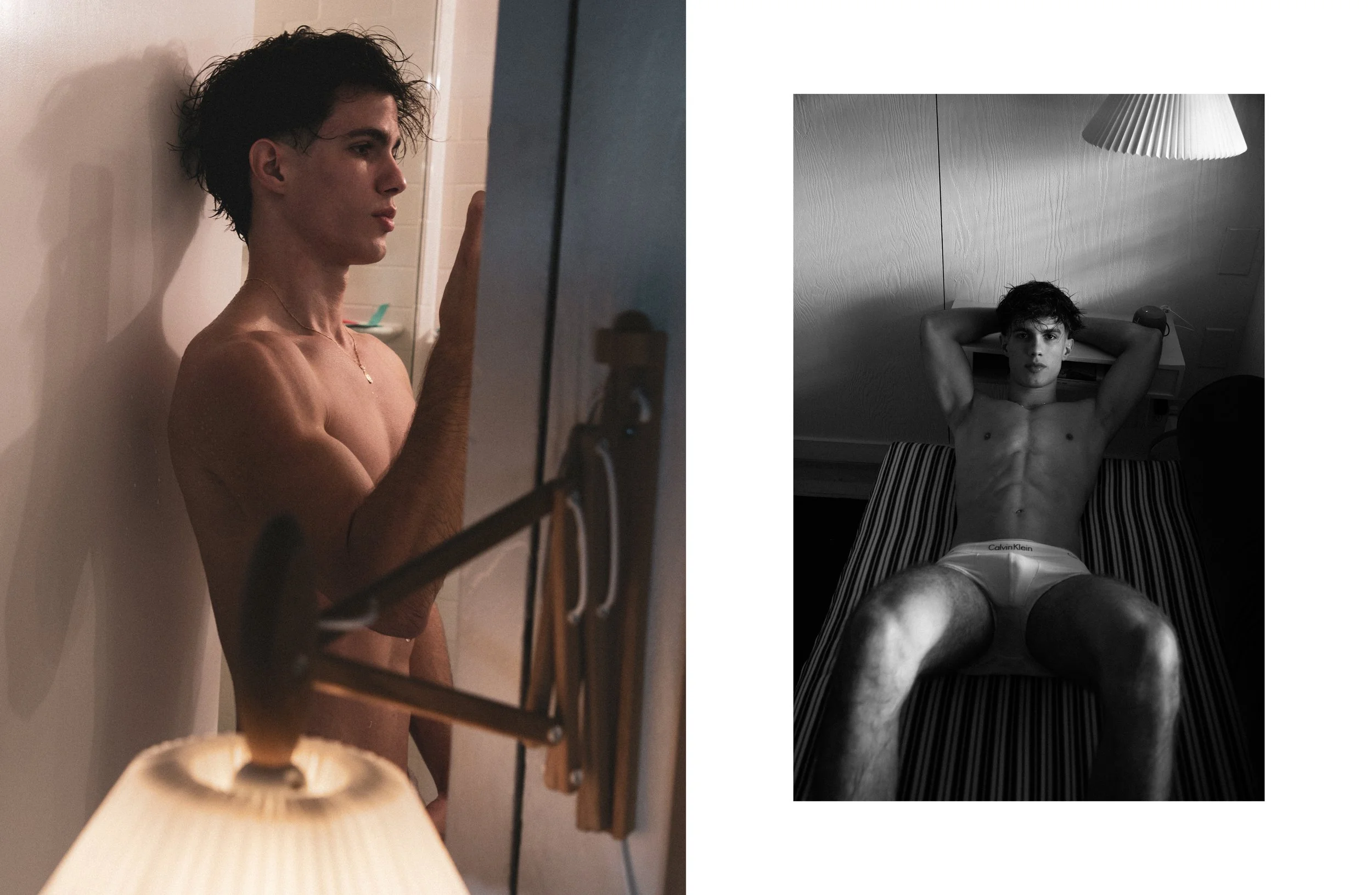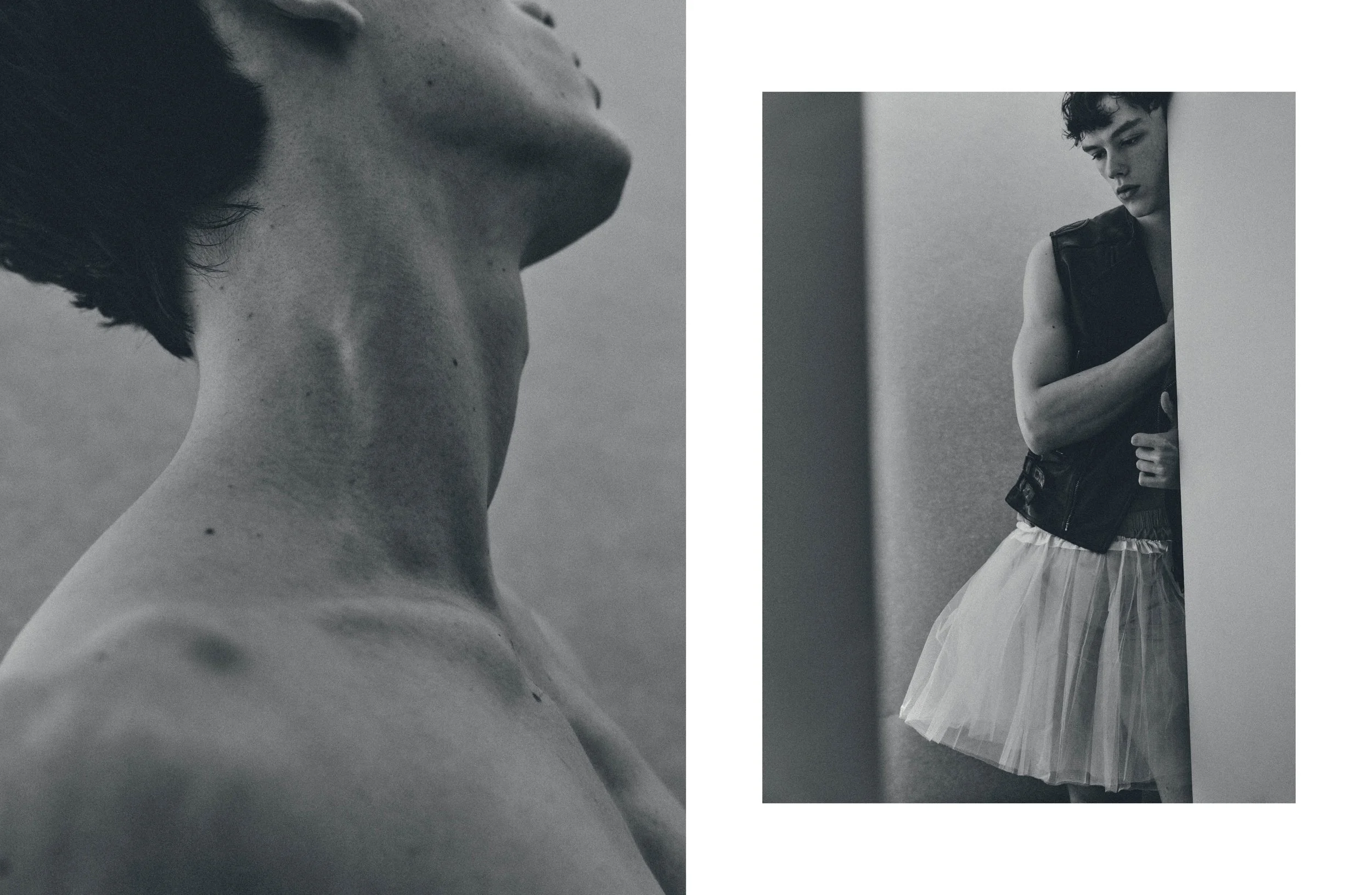Nicolas Di Felice has a unique ability. Not just to create sensually complex pieces or to revolutionize heritage brands—but to find depth in geometric shapes. But unlike the Suprematists before him, it’s not meaning he sees—it’s sensuality. There’s something undeniably appealing about the contrast between sharp edges and the organically curved body. There’s tension in that disparity. Felice’s sex appeal isn’t warm or human; it’s mathematical.
Yet, despite his well-established language, the young designer never forgets the brand he’s tethered to. Even as he revolutionizes what Courrèges means to a younger generation, the original Space Age flair is never far from sight in Di Felice’s vision. This season, that anchor took the shape of a cocoon—an extrapolation from a cape in the brand’s Fall/Winter 1962 collection.
His confidence has sharpened since last season when Felice collaborated with Jean Paul Gaultier on a couture collection. The show opened with an intellectual take on his inspiration: a black leather cocoon coat, its construction both ambitious and flawlessly executed. Later, a similarly voluminous hood returns in lighter jackets. Both pieces share a wonderfully structured stiffness, barely yielding as the models walk.
That was hardly the only gravity-defying piece in the collection. Last season’s invisible mesh tops, which placed angular rectangles in front of the body, have evolved—now, they’re smaller, just enough to cover the model’s chest.
Backstage, he speaks about his fixation on cycles, the central inspiration for his latest collection. But unlike in previous seasons, Di Felice goes beyond the usual circle. This time, he focuses on the Möbius strip, a mathematical marvel that can be achieved with a simple piece of paper—and, not coincidentally, the shape of the metal invitation. In this peculiar ribbon, there’s no beginning or end, no inside or outside, as the two merge. The concept is explored through pieces that present clever illusions, such as tank dresses that appear to be two separate garments but are actually one, held together by cleverly hidden snaps.
Words by Pedro Vasconcelos













